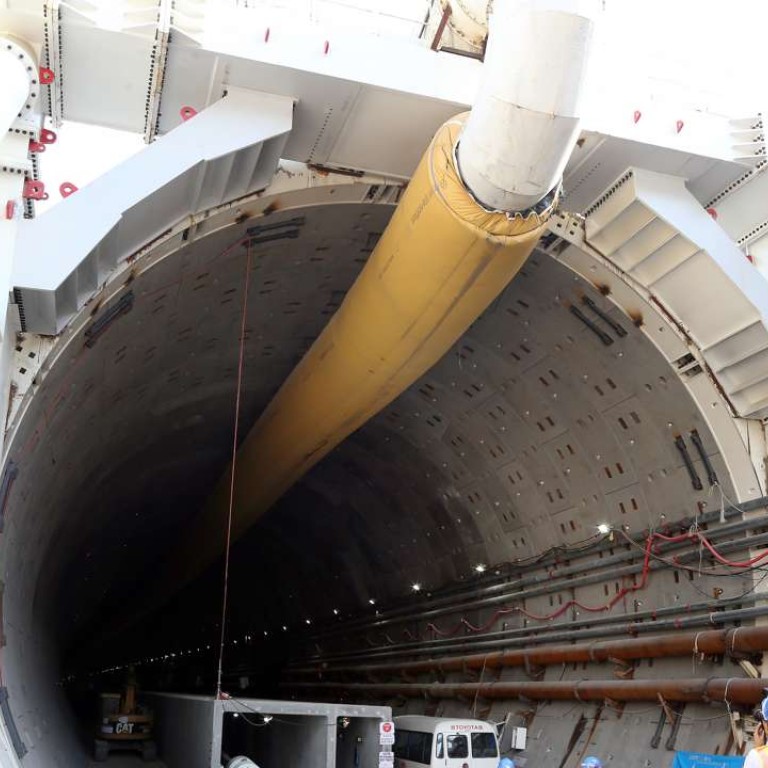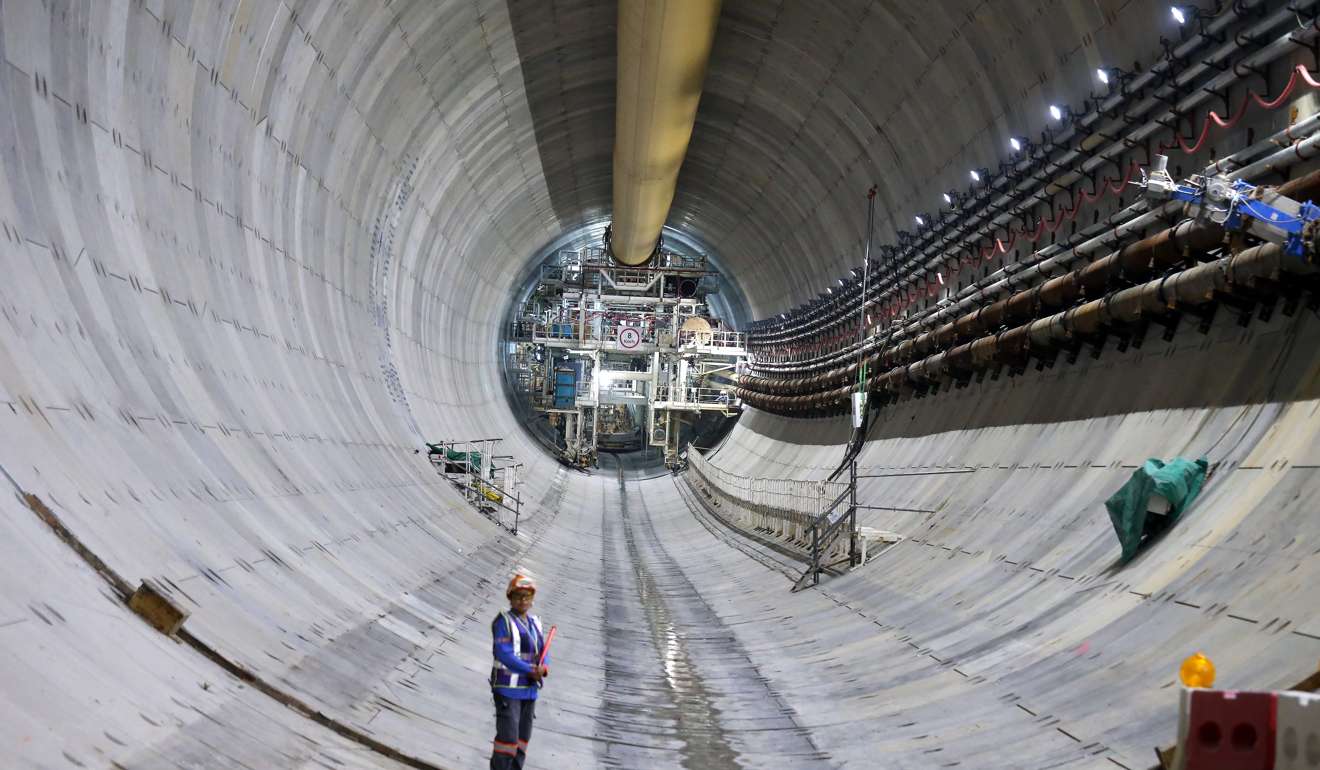
Contractor for sea tunnel to link with Hong Kong-Zhuhai-Macau bridge ‘failed to submit plan’, government says
Director of Highways Daniel Chung Kum-wah says inaction will mean inflated costs and delayed completion date for link connecting New Territories with Lantau Island
An undersea tunnel that will form a key link to the Hong Kong-Zhuhai-Macau bridge risks further delays and cost overruns after a contractor failed to deliver a revised design plan following protracted negotiations lasting more than a year.
Director of Highways Daniel Chung Kum-wah on Friday warned the contractor’s inaction would mean inflated costs and a completion date beyond 2020 for the northern part of the 9km link connecting Tuen Mun in the New Territories with Lantau Island, where the bridge begins. It was originally scheduled for completion by the end of 2018.
The HK$45 billion link is divided into two parts, a northern and southern section. The opening of the latter was set to tie in with the launch of the multibillion-dollar bridge to Zhuhai and Macau at the end of this year, but that date has been revised to the first half of 2019. But the government has stressed that delays to the link will not affect the opening of the mega bridge.
Yesterday Chung issued a warning to Dragages-Bouygues Joint Venture, the contractor in charge of the tunnel for the link’s northern section, saying the government would only give the firm a few more months to deliver.
The 700-metre tunnel will pass by an artificially constructed island that will house the mega bridge’s immigration facilities.

“The construction work has been encountering various technical difficulties ... In view of the site conditions, such as the drafting of the artificial island and the soil conditions, the tunnel alignment below the seawall of the artificial island needs to be lowered by about 10 metres to avoid passing through the stone columns there, so as to ensure the safe operation of the tunnel boring machines,” Chung said.
The government began negotiations with the contractor in 2015 for a revised design but after a number months the firm had failed to submit a feasible proposal, Chung said. Only recently did the firm submit a “crude” amendment scheme with unreasonably high construction costs.
“We don’t know why this contractor has taken such a long time to no avail. We have been urging it to give us a revised plan. We hope the contractor can be cooperative,” he said.
A project contingency fund would be used to meet additional costs incurred and there would be no need for further funding from the Legislative Council, he said.
Engineer Hung Wing-tat, a fellow of the Hong Kong Society for Transportation Studies, said it was hard to say which side was responsible for the delay as there was too little information. “The department is accusing the contractor of being uncooperative. But is this the truth?” he said.
One of the possibilities, Hung suggested, was that the contractor was not satisfied with the contract and wanted more money.
Fellow engineer Albert Lai Kwong-tak said concerns about tunnel alignment had been raised two years ago.


